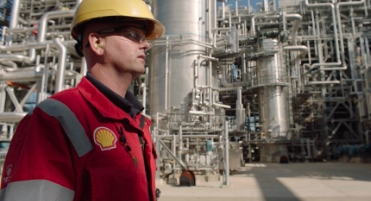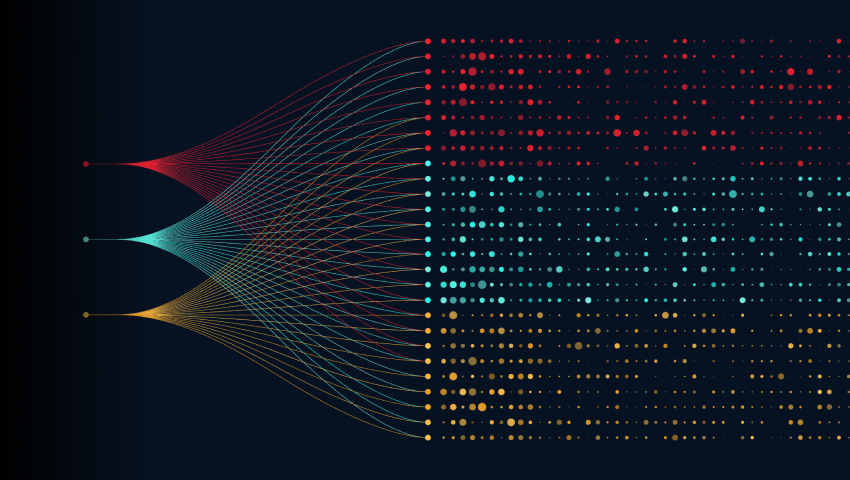Anyone who has run a 10K knows the keys to success are to train well, sustain a steady pace, and accelerate in the home stretch. A similar approach applies when you’re pursuing another kind of 10K — in this case, Shell’s initiative to deploy AI-driven predictive maintenance at global scale. Shell recently achieved its own 10K milestone: it has deployed AI predictive maintenance to more than 10,000 pieces of equipment across its global asset base — which we believe to be one of the largest predictive maintenance deployments on the planet. And they’re just getting started.
I spoke with Dan Jeavons, Vice President of Computational Science & Digital Innovation at Shell, about how Shell achieved this milestone, what’s ahead, and how others can learn from Shell’s experience. The best part: any energy company can benefit from Shell’s hard-won achievement. Shell’s predictive maintenance solutions are now commercially available through the Open AI Energy Initiative, an ecosystem founded together with Shell, C3 AI, Baker Hughes, and Microsoft.
Adi Bhashyam: Congratulations, Dan, on achieving this milestone. Can you comment on the significance of this achievement?
Dan Jeavons: We are moving in the right direction. Today we have AI predictive maintenance monitoring more than 10,000 pieces of equipment at upstream, manufacturing, and integrated gas assets globally. We’re talking about things like control valves, compressors, pumps, and other critical equipment. Equipment and maintenance represent a significant percentage of Shell’s operating costs, and AI-based predictive maintenance enables us to lower those costs by using resources much more efficiently, reducing production interruptions, avoiding unplanned downtime, and extending asset life. But in addition to paying for itself, the environmental and human safety benefits — in terms of improved ability to avoid leaks, accidental emissions, and potentially dangerous equipment failures — are unlimited. So, the ROI is very compelling. For readers who want more technical details and some great examples, we just published an excellent article about our global predictive maintenance program on Shell.com.
Tell us about your journey of getting to this 10K milestone. What challenges did you have to work through?
First, of course, there were the technical challenges. At one time we considered building our own AI platform internally. But we quickly realized the enormous scope of what that entailed — not just to develop it, but to continuously maintain, support, and evolve the platform. So, it was a big step forward for us to select C3 AI as our core AI platform on Microsoft Azure which is running on data provided from the Shell Sensor Intelligence Platform, which is based on Delta lake technology. C3 AI was able to demonstrate the scalability required to train and run millions of machine learning (ML) models, and to ingest and process the massive, requisite data volumes. Today, with more than 10,000 pieces of equipment monitored with predictive maintenance, C3 AI is ingesting 20 billion rows of data weekly from more than 3 million data streams. Our C3 AI deployment is running over 10,000 production-grade ML models that have been trained, tested, and placed into production to detect anomalies in equipment behavior. We have deployed this capability across Shell’s global asset footprint, including upstream, downstream, and integrated gas assets and generate over 15 million predictions every day with our models in production. For each model in production, we have trained and tested three to four additional candidate models. And we’re just getting started. We are accelerating the deployment of AI predictive maintenance to tens of thousands of additional pieces of equipment, and we’re extending AI to many other use cases, so we’re rapidly increasing the scale of what we’re doing.
Beyond technology, what other challenges did you have to work through in putting together the Shell.ai program?
In creating Shell.ai, the overarching program for scaling AI at Shell, we knew we required a multidimensional approach beyond a strong technology foundation based on Microsoft Azure, Azure Databricks, and C3 AI. Technology is just one piece of the puzzle — doing AI at scale is about people, process, technology, culture, and governance. We took a very deliberate approach to how we design and develop a portfolio of AI applications, not just from an analytics perspective, but also how AI is embedded in workflows and presented to end users.
What about culture?
What we’re doing with AI is a fundamental part of our digital transformation. It’s part of the fabric of our culture of innovation and of our community. We have a learner mindset which is critical when adopting new technology, and processes and ways of working. Embedding AI in every part of our organization is crucial in empowering our staff and making our businesses more effective, efficient. To share best practices, we brought together professionals across Shell to form a community.
Shell is now making its predictive maintenance solutions available to the general market through the Open AI Energy Initiative. Why have you decided to broadly share your valuable, hard-won IP?
If we are going to succeed with the energy transition, it’s going to take massive, collective effort across the entire energy sector, not just Shell. As an industry we all need to get more efficient — economically and environmentally — and AI/ML are critical enablers of the transition. Accelerating the adoption of enterprise AI/ML capabilities like predictive maintenance will benefit not only Shell, but it will benefit the entire industry and, most importantly, the planet. It’s just the right thing to do.
Dan, tell us, what’s next?
I am extremely proud of where we’ve come, but we’re just getting started. In 2022, we’re exploring the potential for deploying these technologies in our renewables’ businesses, looking at extending our deployment to assets like windfarms and solar parks. But predictive maintenance is just one piece of how we’re digitalizing our business. We’re also continuing to extend AI to many other use cases, including production optimization, industrial process design, safety, and sustainability solutions. Equally importantly, we’re embedding our models into digital twin technology provided by Kongsberg which can help to accelerate our integrated remote surveillance capabilities. We see the potential to radically transform the way we manage our assets globally. Energy transition will see the energy system transform rapidly in the coming years, and having the digital capability to manage a more complex and diverse asset base is fundamental to our future business.
Those are ambitious goals.
We set high goals because we’ve become quite good not only at the mechanics of scaling AI, thanks to technologies like C3 AI, but also in operationalizing the process: We know how to embed AI into workflow, how to engage cross-company collaboration, how to gain end-user adoption. We’ve done the hard work of laying a strong technical and organizational foundation for AI success at scale. And we’re not letting up — we’re accelerating. But most importantly we’re still learning. We have made great progress, but we don’t have all the answers. We’ve developed a learner mindset and a “can-do” attitude within the team — it’s this that’s helped us reach this point. And it’s this that gives me confidence that we can rise to the challenge of energy transition.
Shell companies have their own separate identities but in this web site we may sometimes use “Shell”, “Group, “we” or “us” when we refer to Shell companies in general or where no useful purpose is served by identifying any particular Shell company.





